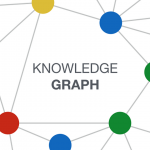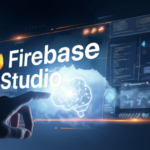In the world of big data, having access to timely and accurate information is crucial. However, with the vast amount of data scattered across the internet, gathering that data is far from simple. This is where data scraping comes into play. In this post, we will explore the challenges and solutions around building a scalable and customizable data scraping pipeline, focusing on crawling data from various websites with different structures and bringing it all together into a unified, usable format.
What is Data Scraping?
At its core, data scraping (or web scraping) is the process of extracting information from websites. Unlike structured databases, the information on web pages is designed for human consumption, making it difficult for machines to directly access the data. Scraping automates this process, allowing systems to pull content from various websites for analysis, reporting, or integration with other systems.
While data scraping is a powerful tool, it comes with its own set of challenges, especially when trying to scale the operation and customize it for various sources.
The Need for Crawling Data Across Multiple Websites
The product we are building is designed to collect data from a wide range of sources—company websites, news outlets, and recruitment pages. Each of these sources is valuable, but the data they provide is fragmented. For example, a company’s careers page may list job opportunities in a format entirely different from another company, while news websites could present articles with varying structures and metadata.
In this environment, crawling the data is not simply a matter of copying and pasting; it requires our system to handle different layouts, structures, and formats across dozens or hundreds of websites. The goal is to consolidate all this fragmented information into a single source of truth, creating a reliable and unified dataset for our end users.
The Challenge of Extracting Data from Different Website Structures
One of the biggest hurdles in data scraping is dealing with the inconsistent structures of web pages. Websites are built with unique HTML structures, CSS layouts, and even dynamic content that loads via JavaScript. This means that no two sites are the same, making it difficult to apply a one-size-fits-all solution to data extraction.
For example, one news website might categorize articles under a simple
div element, while another might embed it within complex nested
tags. Our scraping pipeline needs to be flexible and adaptable enough to
understand and extract the necessary data from each site, regardless of how it
is structured.
The Need for Speed and Efficiency: Near Real-Time Data
In many use cases, including ours, speed is critical. Data that is hours or days old may no longer be relevant, particularly for fast-moving industries like news and job markets. Our pipeline needs to be efficient enough to scrape data in near real-time, keeping our users up-to-date with the latest information.
To achieve this, we must optimize the data scraping process to handle multiple requests in parallel, crawl websites quickly, and ensure the pipeline processes data with minimal delays. This involves balancing the load on both our system and the websites we scrape, as excessive requests could slow down the process or even result in getting blocked by the sites.
The Challenge of Maintaining Multiple Crawling Sources
Another significant challenge is the maintenance overhead. Each website requires its own unique scraper, and as websites frequently change their structure, this means constant updates to our crawling mechanisms. If a site undergoes a redesign, our scraper could break, causing data gaps.
Having multiple engineers maintaining these separate crawling sources introduces even more complexity. Code duplication, lack of centralized management, and communication bottlenecks can arise, making it difficult to scale the solution effectively.
Our goal is to build a system that minimizes this maintenance burden. Ideally, we want a centralized framework where changes are easy to implement and each website’s unique structure can be handled through configuration, rather than manual code updates.
The Problem of Data Normalization
Once data is collected, the next challenge is normalization. Data from different sources often follows different formats—dates, currencies, and even the way job titles are labeled could vary widely. For instance, one website might display a job listing with a publish date formatted as “September 23, 2024,” while another might use “09/23/24.” These discrepancies need to be resolved to ensure that all data fits into a consistent format.
Without normalization, the data would remain fragmented and unusable for analytics or decision-making. Our pipeline must automatically normalize the scraped data, making it compatible with our database and ready for downstream applications.
Conclusion
Building a scalable and customizable data scraping pipeline involves solving multiple challenges, including handling diverse website structures, maintaining speed and efficiency, reducing the overhead of maintaining different crawlers, and normalizing fragmented data into a unified format. In this first part of the series, we have outlined the key problems we need to address.
In the next part of this series, we will dive deeper into the technical solutions and strategies we are implementing to overcome these challenges, making our pipeline both scalable and customizable for various use cases.










